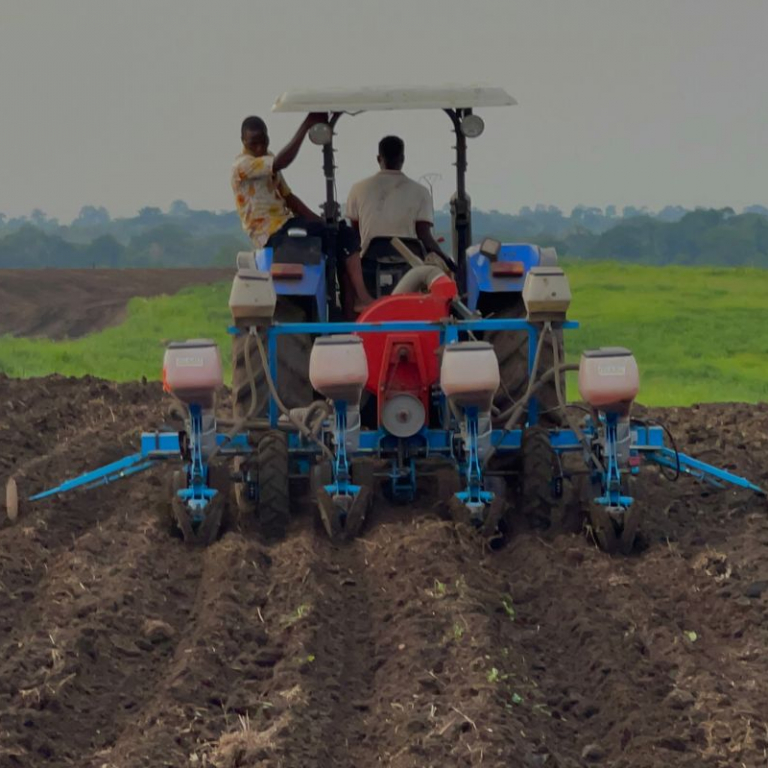A well-prepared soil
Successful sowing begins with good soil preparation. The latter must be loosened in depth, well structured and rich in nutrients. Ideally plough your field twice before sowing.
It is important to break the clods as a result of ploughing, to have a flat, regular seedbed and erase the irregularities of the soil.
A regular fine soil and pressed will promote contact between the earth and the seed, while ensuring the circulation of water and oxygen near the roots. Crumbling the clods will also reduce the presence of obstacles to the emergence of plants.
For more information on soil preparation, read our article "How to properly prepare your soil".
_0.jpg)
Determine optimal climatic conditions
Before sowing, make sure that there is enough moisture in the soil and that there will be no heavy rainfall after sowing.
In dry weather, sow as soon as possible when the rainy season is established.
Indeed, moisture is a very important factor for the success of seed germination. However, be careful, an excess of water can lead to asphyxiation of the roots and loss of plants at emergence. Never sow in dry conditions, as the seed will not be able to germinate.
MAS Seeds supports MASTROP producers in triggering seedlings via its AGROTEMPO® application. Thanks to the compilation of climate data, our sales technicians help you determine the right time to sow.
Sowing, the first step for a successfull sowing
A good sowing will allow a quick and homogeneous emergence of the plants, to guarantee a good start of the culture.
There are several key points to control:
.jpg) Spacing and depth of sowing
Spacing and depth of sowing
Corn is sown in lines usually spaced between about 70-80 cm (depending on the tools used). Sow in the wet part of the soil, ideally up to a depth of 5cm. Sowing is done with one seed per hole.
Seeding density
The density corresponds to the number of plants that one wishes to have in the field. This is the first component of the yield of the plot. This density varies depending on the varieties, the farming practices of each farmer and the end use of the variety.
- For our MASTROP varieties, we recommend a density of 62500 plants/ha. This corresponds to 20 kg of seeds per 1 hectare, or, 2 bags of 10 kg of MASTROP seeds
To be sure to sow at the right density, it is necessary to determine the distance between the grains on the rows in meters. This distance is determined by the following calculation:
Distance between seeds in meters = (10,000 / difference between rows in meters) / density
In the case of a gap between the rows of 80cm, for a sowing density of 62500 plants, the spacing between the grains will be 20 cm on the row. If you reduce the gap between the rows to 70 cm, then the distance between the sown grains should be 22.8 cm.
.jpg) Sowing method
Sowing method
In the case of hand or manual seeder sowing, we advise you to stretch a rope along the rows of seedlings to have straight rows.
If you use a mechanical seeder, it is important to control the speed of the tractor to ensure homogeneous sowing. A speed of 5-6 km/h is sufficient for most tools in good conditions, but in more difficult conditions the speed can be reduced. Sowing too quickly will lead to plant shortages, uneven emergence and duplicates.
Regardless of the method used:
- Regularly check the depth of sowing and the gap between the seeds to respect the density,
- Properly press the seedling line, to maintain the link between the seed and the soil.
Seedlings can be accompanied by the application of fertilizer to help with the start of the plant. In this case, the fertilizer should be buried 5 cm next to or under the seed (no direct seed-fertilizer contact).
The commitment of MASTROP seeds
Our seeds are certified, this include a germination rate of 90% minimum. They will require only one seed per place. They are also protected with high-quality phytosanitary technology to secure your seedlings. This will facilitate their germination to reach the best level of yield.
A lire aussi




